DESIGNING THE NFL'S FIRST FITNESS PLATFORM
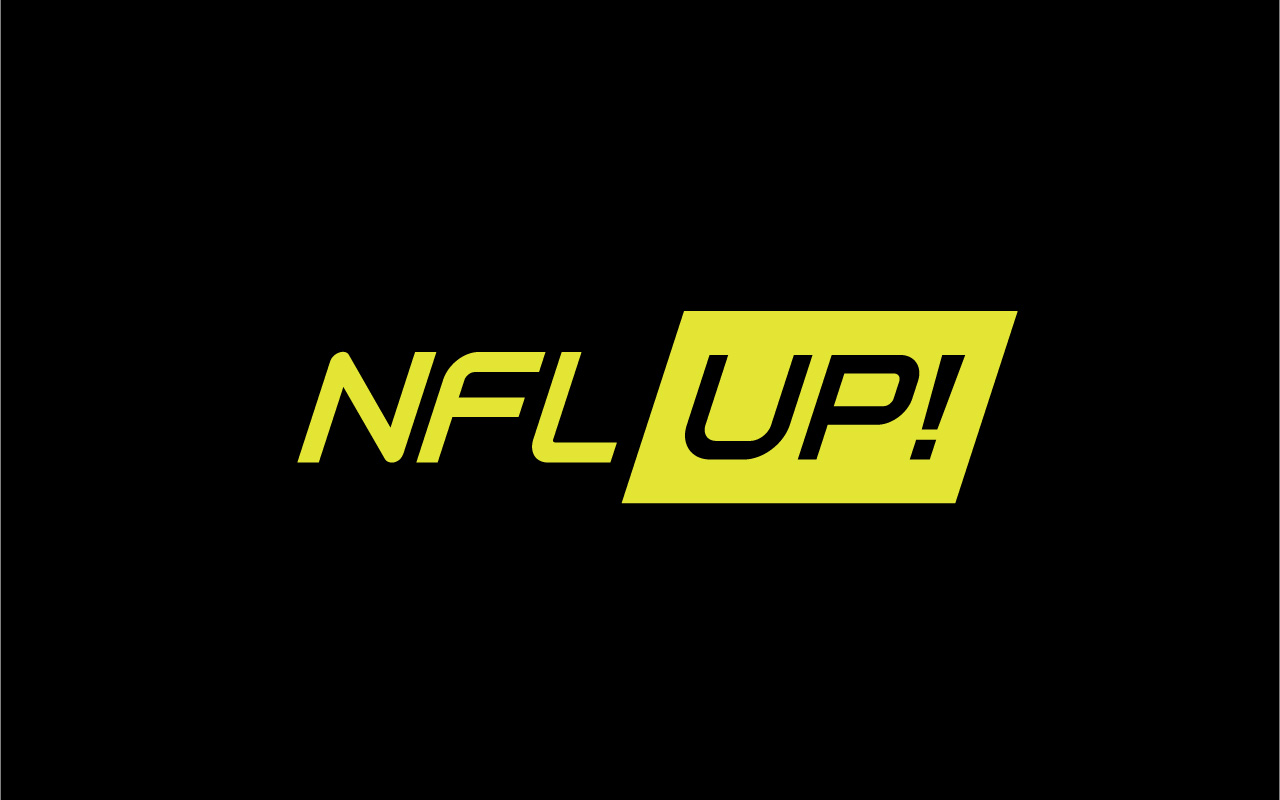
CREATE AN AUTHENTIC FITNESS EXPERIENCE FOR NFL FANS
NFL Digital Media wanted to identify opportunities in the health and fitness space. We wanted to reach fans seeking to improve their health and wellness through the lens of football. We were challenged with gaining a deep understanding our target NFL fans and to uncover the following:
1. What types of fitness content is most valuable to our fans?
2. On what platform?
3. With what features?
BUSINESS OBJECTIVES, DESIGN STRATEGY & METRICS
I start every project with an outline of our business requirements. It is important to me that the project aligns with the needs of the business. The business requirements provide the project team with a layer of validation that we can revisit throughout the design process.
The next step is to turn business objectives into high level design strategy. The what. These may evolve throughout the design process as we uncover specific insights, but with projects on short timelines I like to start with some early frameworks that can kickstart some of the requirements for product design.
The third column represents relevant metrics to each category. Essentially this provides a quantitative framework for the project. Some questions that we consider include: 'Where does this project fit in with our sales goal?'or 'What is our website traffic forecast and how does this project support those numbers?'. I have found that talking about metrics early helps align stakeholders with a shared understanding of our goals.
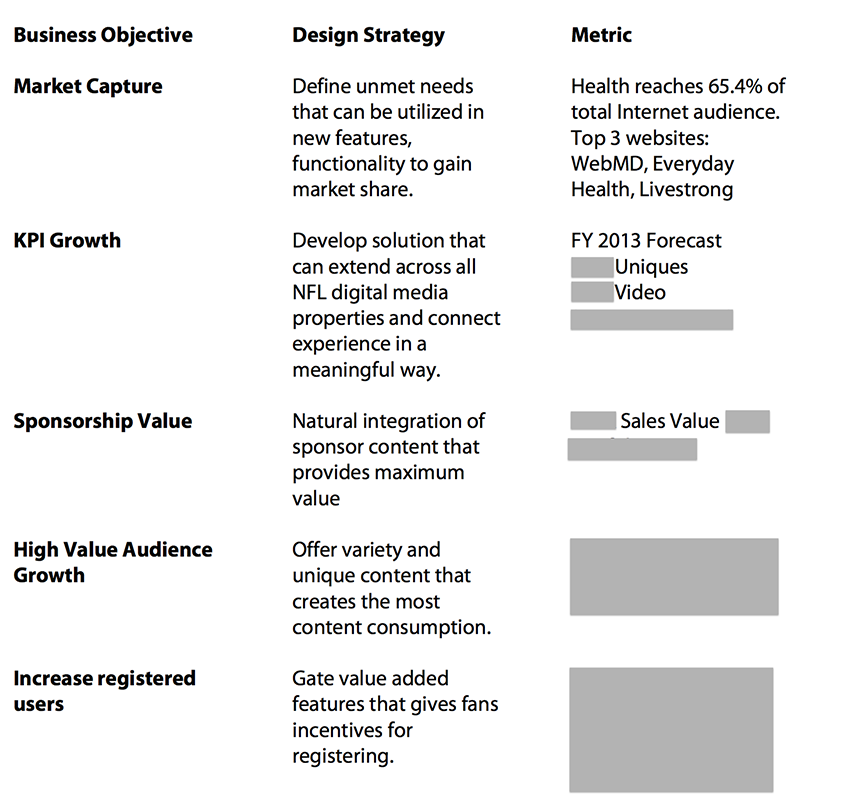
RESEARCH AND INSIGHTS
The fitness space was an area outside of our core capabilities so it was our intent to use research and design to yield the best solution. Our process started with defining research goals:
- What fitness content exists on digital and what is the experience?
- What is our competitive advantage?
- What is the demographic makeup of our fans in the NFL Media ecosystem?
- What are fans’ views towards fitness?
- What are fans’ opinions of NFL players' fitness habits?
We researched sixteen websites and apps and found several similar themes representative of digital fitness properties:
- Static: It is hard to tell what content is new or most popular. Most experiences online seemed stale.
- Passive: Users can share fitness content, but that is the extent of social. There were limited opportunities to engage around the content
- Overloaded: There is an overwhelming amount of content with no clear hierarchy or intent.
- Generic: Very few sites featured content that uniquely represented their brand. Many had a vague value proposition. It was unclear why one would prefer one site over the other.
We then mapped the main attributes of the sites we researched. The purpose of this was to visualize where competitors sat in the digital fitness ecosystem and at a high level discover where the opportunities were to create a product that is differentiated from the mass.
In our obversations the goal of most sites was to reach a mass audience through broad fitness topics. These products were either driven by interactivity or programmed by an editorial staff. We felt the opportunity that we could exploit involved a specialized, user-directed experience.
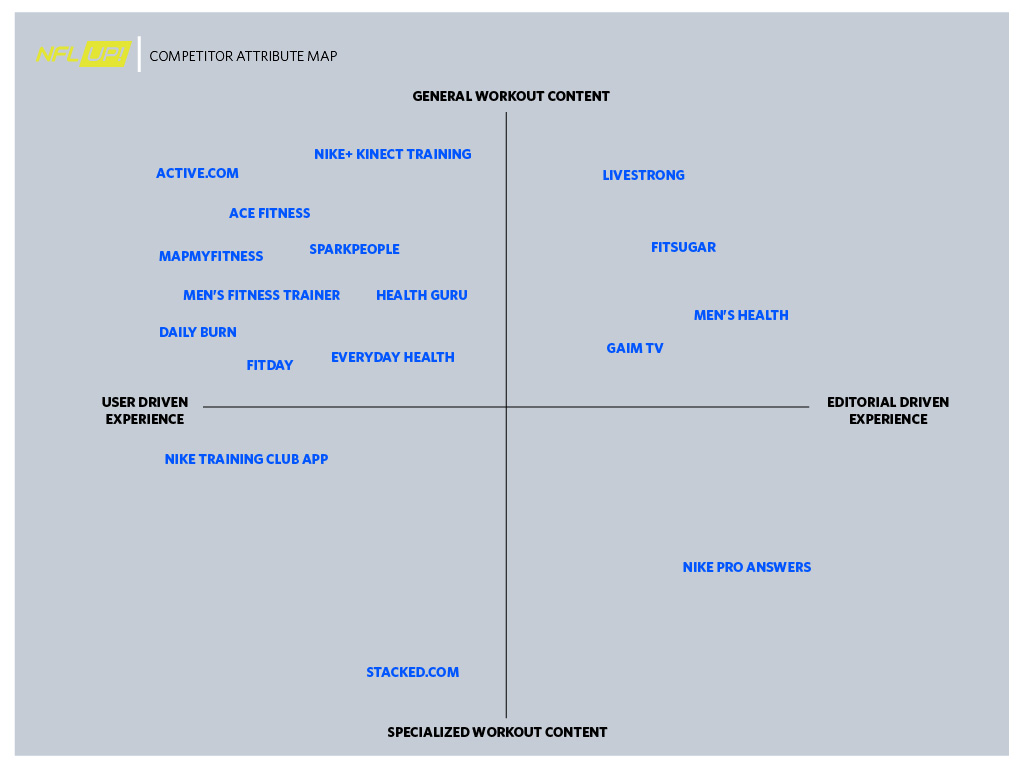
Next, we examined the three main components of our competitive advantage:
- NFL Media Group - The media group consists of NFL Network and NFL.com, but also extends to team sites. We can leverage content across these platforms and drive fans back and forth.
- NFL Everywhere – The NFL ecosystem (NFL games, the 32 clubs, broadcast, and digital properties) offer multiple touch points for content integration and exposure.
- NFL Content - The ability to partner with NFL players, clubs, and league assets in content creation gives us access to content that no one else can easily replicate. This fits into our ability to create specialized fitness content.
To identify the fans we wanted to target we needed to know where they existed in the NFL Media group ecosystem. We looked at NFL Network ratings, visitors to NFL.com, our followers on the NFL league facebook page, and the NFL Network Facebook page. From there we identified an opportunity to reach 18-24 year old males who are highly engaged with every part of our ecosystem.
To uncover specific habits and views towards fitness we released a survey on NFL.com. We found that 18-24 year old males over-indexed vs. the rest of the age/gender groups in the following categories:
ON FITNESS
- They are performance driven.
- They exercise to train for sport or competition. They are more oriented towards performance than general health.
- Exercise is social.
- They workout with friends or with a sports team/training group. Even if they exercise alone, they are interested in exercising with others.
ON TECHNOLOGY
- They utilize exercise and technology.
- They are using apps to exercise. They also watch fitness videos and share content with friends.
- They are social gamers.
- They play multiplayer video games and invite friends to play games with them.
ON NFL PLAYERS AND FITNESS
- They aspire to be like their favorite NFL players on the field.
- NFL players inspire them to workout and improve their fitness habits.
Our research determined that this group’s strong affinity towards NFL players would give the platform a high probability of adoption and engagement. In addition a focus on this segment would align with potential sponsors' goals of reaching the same audience.
I started to map attributes to our target fan using XPLANE'S Empathy Map Framework.. I find this to be a great tool to help visualize the behaviors and emotions that would help focus the product design.
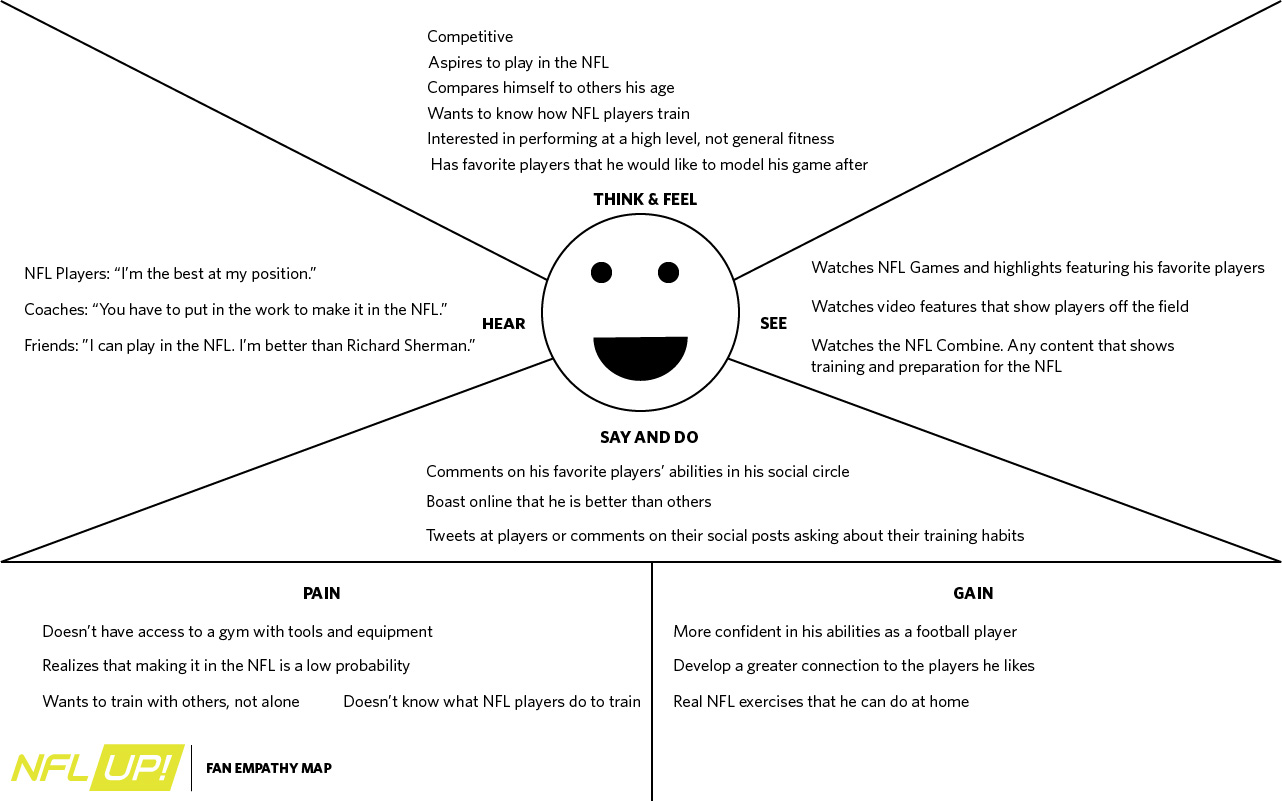
THE VISION
The research provided an understanding of the competitiors and where our fitness product could live within this ecosystem. It also guided our design principles for the fitness product we were building. The principles below shaped the experience, visual direction, the logo design, and the content.
- Be Authentic
Co-create content with NFL players and trainers utilizing their expertise to create a unique offering that fans cannot get anywhere else.
- Be Actionable
The experience is goal driven and encourages active participation and repeat visits.
- Be On Demand and “Snackable”
Fans can start anywhere and access content in any order. Make it easy to consume.
- Be Varied
Content is presented through a variety of media to support diverse health and fitness goals.
- Be Social
Drive engagement by connecting fans, players, and teams around the content.
LOOKING FOR INSPIRATION
Understanding that our fans behavior was driven by influencers and the need for connection and conversation, plus their use of technology to augment their experience, I looked at crowdsourcing models like Kickstarter and Call of Duty's online multiplayer experience to see what elements could extend to this fitness platform.
THE STORY
Every Kickstarter campaign has a story. A background on the idea, the why, the what, and a call to action. Similarly, NFL players have stories to tell about their workouts and their motivations for fitness. The idea of including a story with every workout tied into our research of fans being inspired by athletes.THE VOTES
When you play Call of Duty online the maps (levels) that you play are determined by voting. Majority wins. I knew I wanted to incorporate a voting component to the experience as way to increase repeat visitors (business objective), but also to address the static feeling other fitness sites had.In addition NFL player affinity is a strong attribute of NFL fans so this feature would provide incentive for voting and for sharing with others.
The initial concept simply had a list of player workouts to vote on each week. Our IA designer suggested we put the players against each other like a game matchup. This was a great evolution of our idea.
USER JOURNEY
After outlining our design principles I created a sketch to represent the fitness experience with touchpoints on TV and digital. The purpose of this was to start to make the product tangible for stakeholders. The inital model had more features than our final product. We decided that proving the concept of connecting young fans with fitness habits was more important than implementing rewards and leaderboards.

GAMESTORMING THE 4C's
At the end of the research phase, I pulled out a Gamestorming tool called 4C's which stands for "Components", "Characteristics", "Characters", and "Challenges." Details on the game are here. I mapped out all the parts of the experience, the people involved for success, and the potential challenges that could arise in building the product or after launch. One of the big challenges that became visible was that we were not fitness experts.
To deliver the authentic fitness experience we outlined in our design principles we needed to involve NFL trainers. As part of our content plan we included weekly articles written by NFL trainers. Connecting our fans with NFL fitness experts was important to our design strategy.
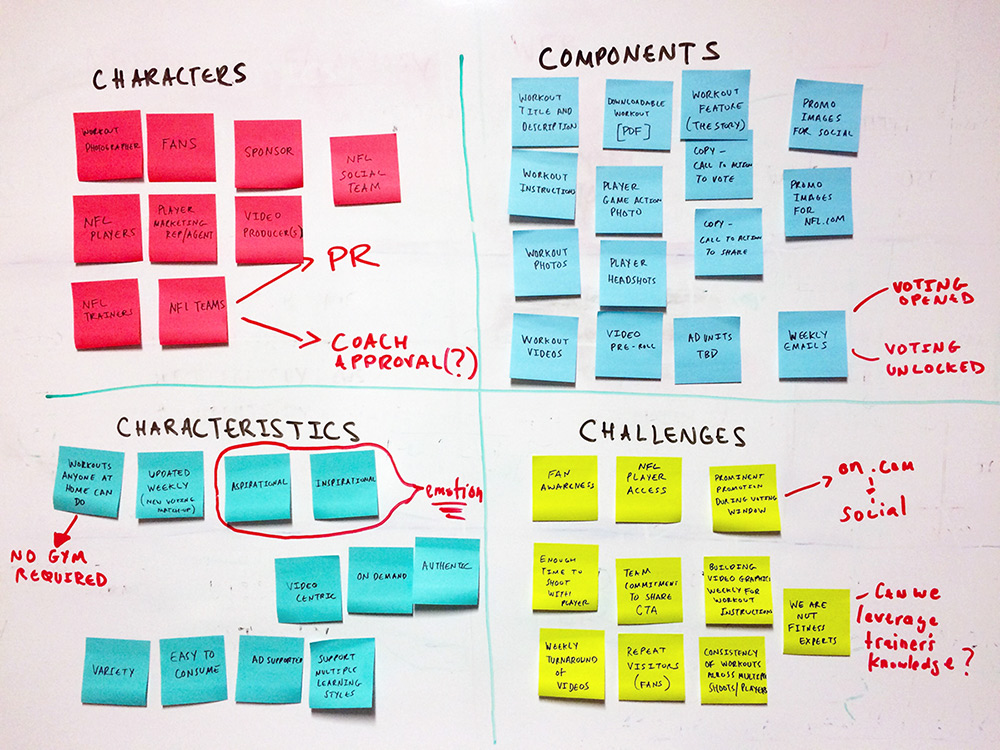
THE NAME
Our initial name for this project was NFL Fit. (I am a big beliver that we need to name a project as soon as possible so that we can start to think of it as something real). The name NFL Fit seemed too generic. We needed something that spoke to the inspirational and aspirational themes that our fans expressed through the survey. With NFL’s social media manager we spent an hour brainstorming a better name. We landed on NFL Up! for the following reasons:
- Sync with themes of aspiration and achieving something at the next level
- A name that can extend from the digital to physical space
- Energetic and something you can hear a young athlete saying
- Fit into the interaction experience that we are building (voting, competition, community, ranking, etc.)
- Tie into common phrases we hear on the football field and during games - rise up, step up, gear up, level up, wind up (but also in other sports)
- Can carry the content and the elevator pitch (Up your game. Get fit like your favorite player.)
CREATING A FEEDBACK LOOP
I think every digital content platform should have a framework for how to keep fans coming back. With a systems design layer we developed a cadence to the site’s experience that would allow fans to know when new content was available. If fans voted we also invited them to provide their emails. This allowed us to notify them if the workout they voted for was unlocked. As a result, we grew a contactable database for health and fitness content.
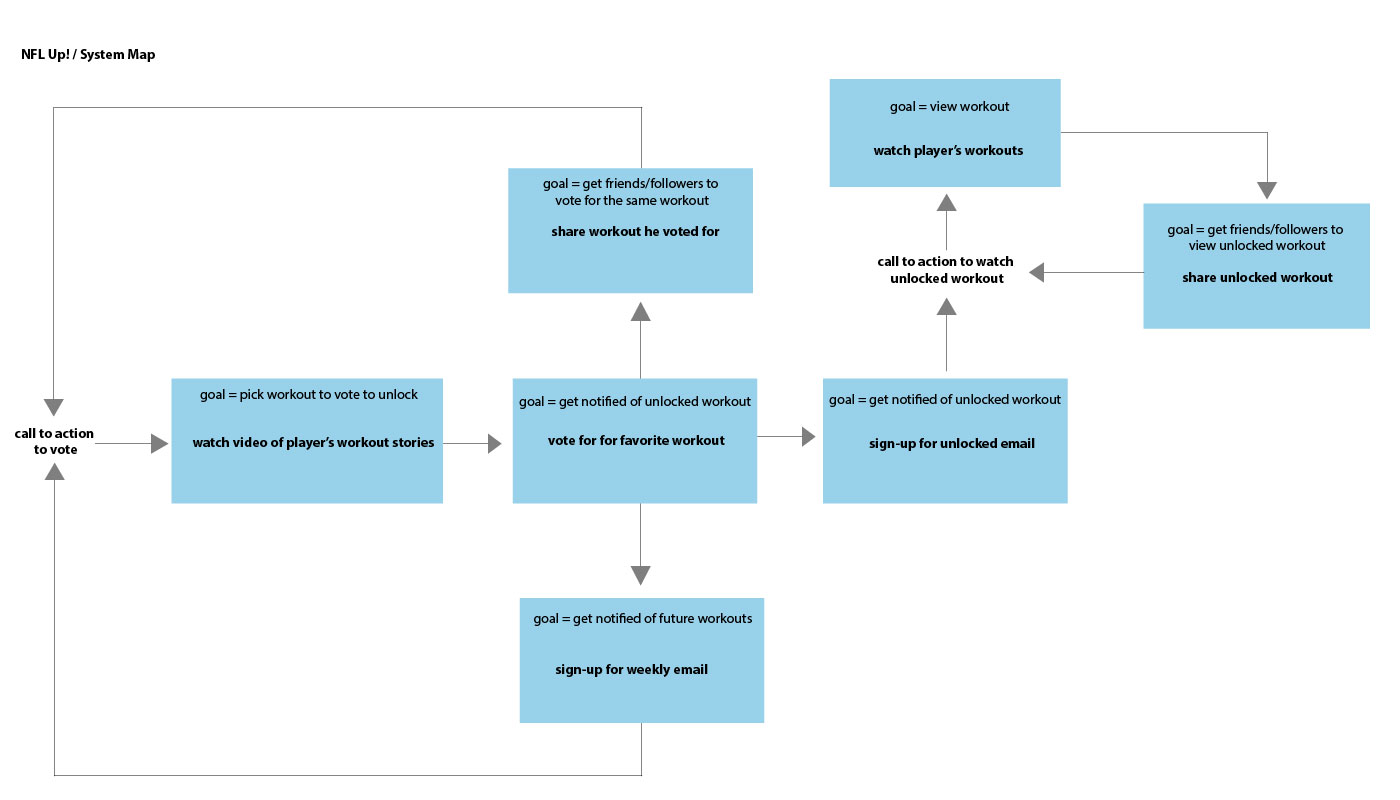
NFL UP!
NFL Up! connects football fans and young athletes to health and fitness content from NFL players and trainers. For 17 weeks, the entire NFL Season, fans vote to unlock workouts and football drills from NFL players.
The platform provides fans with position specific workouts and fitness advice. These workouts consist of video demonstrations, written instructions, and step-by-step photos. Featuring the best NFL players in the league, NFL UP! gives fans an in-depth look at fitness training for professional football. Topics include: speed, agility, flexibility, strength, endurance, cardio, and more.
THE EXPERIENCE CYCLE
Using Huge Dubberly and Shelly Evenson's Experience Cycle Framework. I mapped the NFL Up! experience from the perspective of the fan across touchpoints. I think revisiting the fan voice throughout the project helped clarify our strategy as we moved to development and content production.
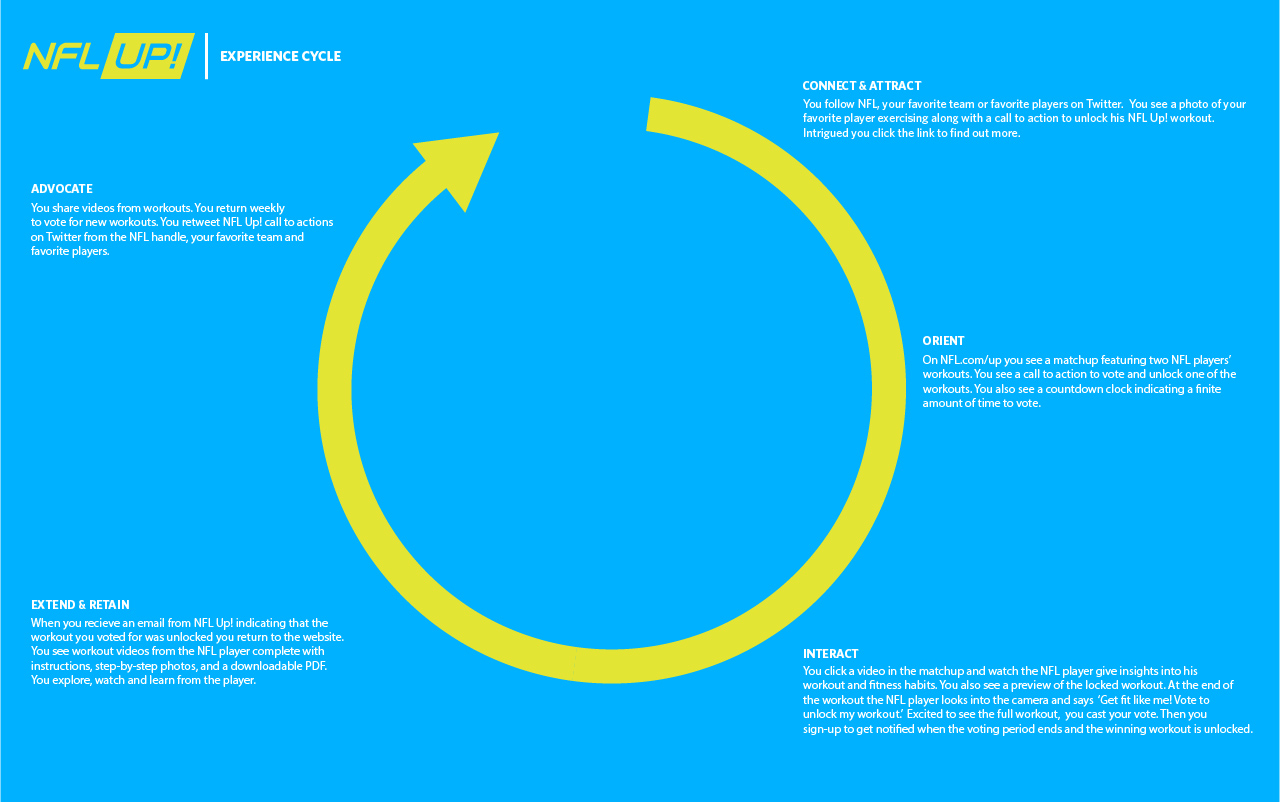
BUILDING AN MVP
A month before launch we created a splash page and promo video to test interest in the concept. I wrote the website copy and video script utlizing the insights we learned to determine tone, cadence, and voice. NFL Up! received over 4000 email addresses during that time. At launch we notified the early adopters. It was great to kick off a project with some interest and momentum.
SPLASH PAGE

NFL Up! PROMO VIDEO
THE VALUE
The value proposition for our target fan is “Up your game like your favorite NFL player”. We designed a fitness experience that touches on all of the findings we uncovered in our research and connects our fans with NFL players in a unique and meaningful way.
The value for the organization is threaded throughout the experience and tied to business objectives:
- NFL players define the workouts. Their demos are unique to their routines ensuring a robust content offering.
- New workouts are released weekly and fans are engaged often with new, relevant content. Workouts are gated - encouraging fans to vote for the workouts they want to see.
- The story of a players’ workout habits appears on NFL Network (TV) and drives fans to NFL.com to vote.
- Fans are an active participant in the experience. They vote and get their friends to vote to unlock workouts. NFL teams and players participate in the experience - sharing content across social.
NFL Up! YEAR 1
CREATING CONTENT USING A DESIGN PROCESS
This project shaped the digital team’s view towards research and design-led projects. We showed that if we approach content creation through a design lens, we can utilize our understanding of a fan’s goals, expectations, and behavior to develop the right experience and meet business objectives. We demonstrated the importance of targeting a specific fan to drive maximum engagement, not simply creating a catch-all experience for a generic audience.
Initial ideas from stakeholders centered on a video series, but our findings uncovered deeper opportunities to connect fans with fitness content. The biggest finding was that our target fan was driven to improve their performance. By framing our content around NFL players instead of general football fitness we built a platform that speaks to this goal.
Through metrics we were able to show the project’s success for the business and long-term value. NFL Up! received a Sports Emmy Award in 2014 for Outstanding New Approaches - Short Format. The platform was also sponsored by Gatorade in 2014 and 2015.
MY ROLE
I led the creation of NFL Up! from idea to launch at the start the 2013 NFL Season. NFL Up! featured over 180 workouts from 90 NFL players. The NFL Up! platform was built by Sly Trunk.
PRODUCT DESIGN
I partnered with a product manager, Josh Schachter, from concept to execution. We worked together to identify our business objectives and align them with product requirements and fan needs. We also worked together to source a vendor that could engineer the product.
CREATIVE DIRECTION
I developed the NFL Up! concept and provided guidance to visual designers and producers on the visual style and tone of the website and in the videos.
RESEARCH & INSIGHTS
I developed our research plan for this project and synthesized the research into insights. Together with Josh we performed competitive research.
COORDINATING PRODUCER
I oversaw the production of the workouts to ensure they met our design principles. I collaborated with Diesel Films to determine the look and feel of the videos and the graphics.
DESIGN STRATEGY
I developed frameworks for defining the overall experience. These frameworks were used as design principles to inform information architecture, visual design, branding, development, and content strategy.
CONTENT STRATEGY
I developed the format for the workouts which included the different content types and assets that would make up an NFL Up! workout and how those assets would be produced and updated.